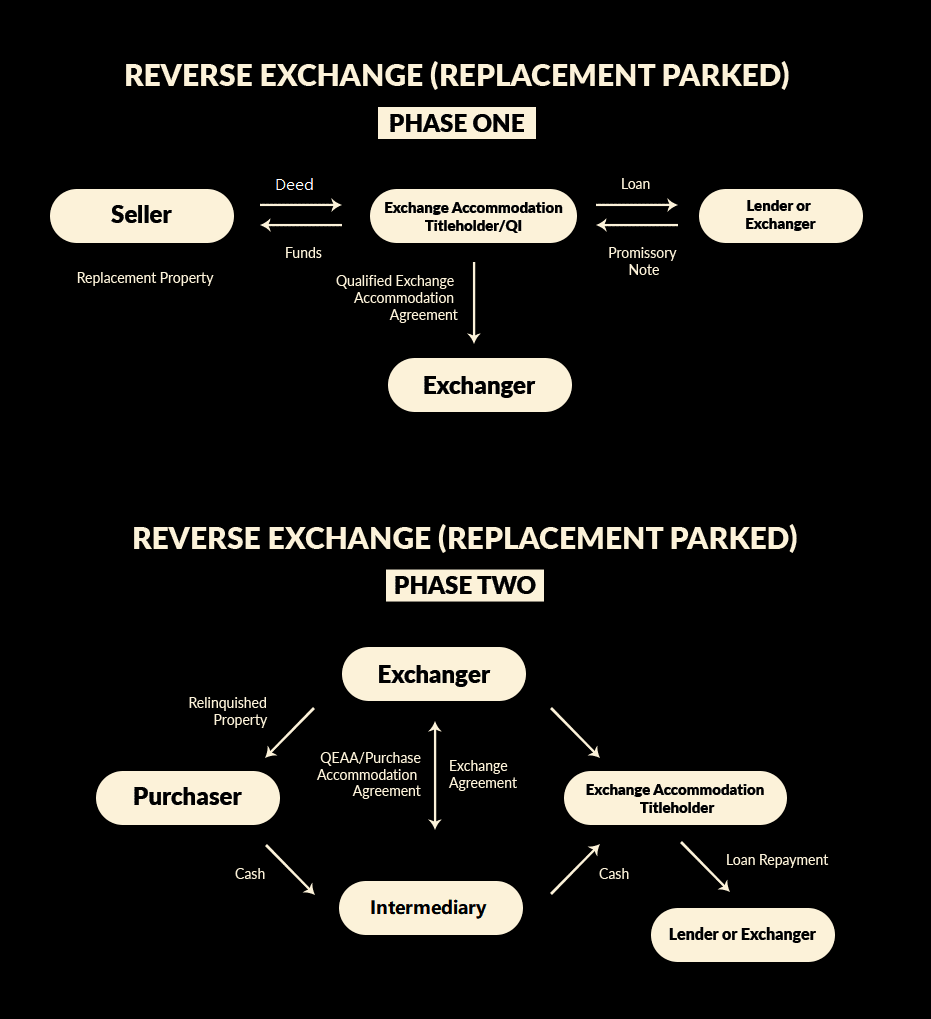REVERSE EXCHANGE LOGISTICS
Let's provide a little detail for how we facilitate a reverse exchange shall we?
First off, we know that a reverse exchange is utilized when an Exchanger wants to acquire their replacement property before they sell their old property, correct? But why can't an Exchanger just buy the replacement property first, then subsequently sell the relinquished property within the 180 day exchange window, and simply report it as a backwards 1031 exchange?
Here's why. The IRS will not allow you to exchange into property you already own. So, we need to utilize a logistical process that allows the acquisition of the replacement property, but does not position the Exchanger where they will be exchanging into property they already own.
Fortunately, the IRS created some guidance in the form of revenue procedure two thousand dash thirty seven, which provides us some excellent insights into how to accommodate an IRS compliant reverse exchange. It utilizes an interesting, and critical mechanism known as an exchange accommodation titleholder, or EAT.
Let me explain how it works within the scope of what we call the exchange last approach. This is the approach used in a large percentage of reverse exchanges where an Exchanger advances the cash necessary to buy the new property by making a loan to the exchange accommodation titleholder.
Here's how it works:
First, the Exchanger finds the replacement property they want and they get it into contract. Then ,they immediately engage a Qualified Intermediary, hopefully one that is very familiar with reverse exchanges, and the facilitator creates a new limited liability company to act in the stead of the Exchanger, as the exchange accommodation titleholder. At this point is where the Exchanger typically lends the LLC the necessary funds to close the replacement property purchase. Actually, they wire the necessary funds to the closer, but the loan is recognized in the reverse exchange documentation.
Now, when the new property closes, that starts the Exchanger's 45 and 180 exchange clock. Meaning, in this case, they will need to identify the property they are going sell within 45 days, and subsequently close the sale of their relinquished property, within the standard 180 day exchange period.
Now let's move to the time the old, relinquished property is sold. When it closes and the exchange proceeds are sent to the Qualified Intermediary, two things happen. First, the funds the Exchanger advanced to buy the new property are repaid to the Exchanger and their loan to the EAT is repaid. And, two, either the replacement property is deeded to the Exchanger from the Exchange Accommodation Titleholder, or in many cases, the EAT LLC itself is assigned directly to the Exchanger. Sometimes the LLC assignment is a better process simply because it can avoid a potential double transfer tax situation for the Exchanger depending on the jurisdiction where the replacement property is located.
So that explains the basic logistics of a typical reverse exchange. Now let me add some caveats, because, as you can see, reverse exchanges are much different to a traditional forward exchange. This is not to say that reverses are difficult, they really aren't. But there are many moving parts and occasionally, the water can get deep in a hurry. So, be careful!
Here's our caveats:
Reverses can sometimes get very complicated and complex, so only use an Intermediary that knows exactly what they are doing.
Reverse fees are always going to be far more expensive simply because of the transactional logistics and the creation of the LLC. They also involve much more extensive paperwork because of loans, leases, pledges, and much more. They generate lots of paper! Trees will be dying to generate your reverse documentation.
Can an Exchanger finance the purchase instead of lending their own cash? The answer is yes, but it is very difficult to find a lender who will lend to the EAT. You'll need a portfolio lender or one who knows the Exchanger and their assets well.
Can an Exchanger deed the old property to the EAT instead of the replacement property? Yes, this is known as an exchange first reverse. These occur in about ten percent of reverse transactions.
Can you go past the 180 day exchange window with a reverse? Yes, this is known as a non safe harbor exchange. It's a great alternative in certain cases, but it is also dramatically more complicated, and again even more expensive than a regular reverse exchange. But it is also an excellent way to complete a constructions exchange and have up to twenty four months to complete the exchange.
So, that is reverse exchanges. If you have additional questions, which you should, give us a call and we'll discuss exactly how a reverse could work in your personal situation

